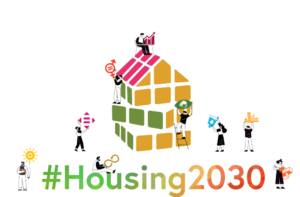Tenant democracy in Denmark

Social housing landlords in most European countries have arrangements for involving their tenants in governance. These arrangements have progressed furthest in Denmark and have evolved into which is popularly known as “tenant democracy”.
Description
This system enables tenants of housing associations to exert significant influence over estate management. Every year at an annual tenant meeting, the tenants of each housing estate elect a tenant board responsible for estate management and financial governance. At these meetings, tenants also approve rents, estate budget, estate management rules, and major maintenance and refurbishment projects. A majority of tenants must also approve any proposed sales of dwellings in their estates.[1]
These arrangements are attractive for tenants because they give influence over the management of their homes without requiring them to take responsibility for running estates themselves. Furthermore, there is evidence that the tenant democracy system has helped to strengthen the Danish social housing sector. This is in part because tenant democracy arrangements have increased tenants’ commitment to the sector and ensured that landlords are responsive to their needs, and that rent increases are kept to affordable levels. In addition, tenant boards have generally voted against sales of dwellings, limiting the impact of central government efforts to privatize social housing.[2]
[1] Hedvig Vestergaard and Kathleen Scanlon, ‘Social Housing in Denmark’, in Kathleen Scanlon and others (editors) Social Housing in Europe. London: Wiley. (2014).
[2] Ian Cole and David Etherington, “Neighbourhood renewal policy and spatial differentiation in housing markets: Recent trends in England and Denmark’, European Journal of Housing Policy, 5(1) (2005).
Actors involved
BL – Danmarks Almene Boliger
Scale
National

An initiative of:


